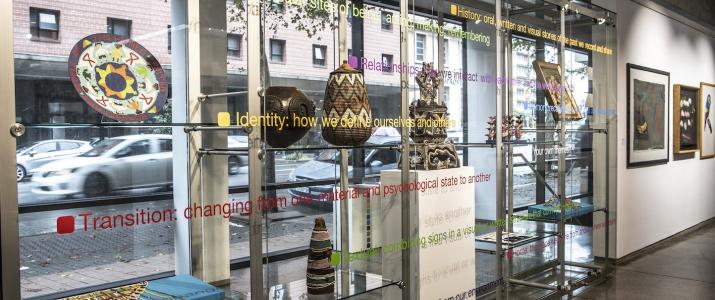
Wits Art Museum (WAM) turns 10 this year, and Wits is 100 years old. To celebrate these milestones, a special exhibition called TENX10 is being held at WAM, featuring artworks by 100 women and gender diverse artists.
Why women? “Because historically art has overwhelmingly featured men,” explains senior curator Julia Charlton. “After the initial exhibition there will be a number of exhibitions that feature women too, especially black women. There will also be an exhibition of the 25 William Kentridge works that are held by the museum, and a number of workshops will be held.”
Part of WAM’s mission statement is to “stimulate and facilitate compelling encounters and engagement by academics, students and the broader community with WAM and its collections,” and TENX10 is no exception. A pamphlet on TENX10 that can be obtained from WAM invites readers to engage with what they see and read, asking them questions such as “can you think of other themes that may apply to these artworks?” and then instructing them to “write down your additional themes” in a space provided on the pamphlet. The museum itself, which is open to the public, encourages visitors to share their interpretations of artworks with WAM and each other, and contribute to the museum’s response wall.
The location of WAM was carefully chosen to represent Wits, as it is “absolutely at the edge” between the university and the suburb of Braamfontein. The university’s considerable resources — and the enormous collection, which includes over 13 000 African artworks — are thus available to the public for free, as well as Wits students and staff. The museum knits together parts of three buildings, on the corner of Bertha and Jorissen Streets in Braamfontein: Lawson’s Building, where Lawson’s Motors was previously located; University Corner; and Dental House.
WAM is part of Wits and follows the university’s Covid guidelines, which includes mandatory vaccination. Unfortunately Covid, which Julia said “significantly” interrupted WAM’s operations, resulted in the closure of the very popular coffee shop — and it’s still closed. “Many people used to come in off the street for coffee, in addition to Wits staff and students, who can access the campus through WAM. The company running the coffee shop feels it is not financially viable to open it yet. People would come in off the street for coffee, then look at museum; others would look first, then take a coffee break to ‘absorb’ the huge amount of art they had just seen,” she explained.
One of the most intriguing aspects of the Museum is the Jack Ginsberg Centre for Book Arts, which houses over 3 000 artist’s books, 400 of which are South African (if you’re wondering what an “artist’s book” is, Google it — it’s a fascinating read). There’s a horse skeleton inscribed with words; some books are really tiny; others open up and fan out over large areas. But, if that’s not your thing, there’s lots more: the Ethnology Collection, the Neil Goedhals Archive, the Robert Hodgins Print Archive, the Sekoto Collection, and the Walter Battiss and Judith Mason archives.
As a museum, WAM fulfils a vital function: the preservation of African art, which was largely ignored by the colonials for centuries, beyond ethnographic and anthropological interest. It was only in the 1970s that African art began to be taken seriously, beyond being seen as “craft”, and became part of the art syllabus in art schools.
Asked how Braamfontein can advance, Julia said that, frustratingly, the pavement outside WAM has been dug up “five or six times” in the decade since the museum was established, for various reasons, such as the laying of fibre cable. “I’m very excited about the opening of the park, which will happen on 4 July; it will provide a place for students to sit other than under the eland sculpture.
“The traffic situation also needs to be sorted. Braamfontein has a lot of pedestrians, and it’s very hazardous for people to negotiate the hectic traffic. There’s also a huge parking shortage; WAM has a basement that works for evening events, but during the day, it’s full of Wits staff cars.”
For more information, visit: https://www.wits.ac.za/wam/